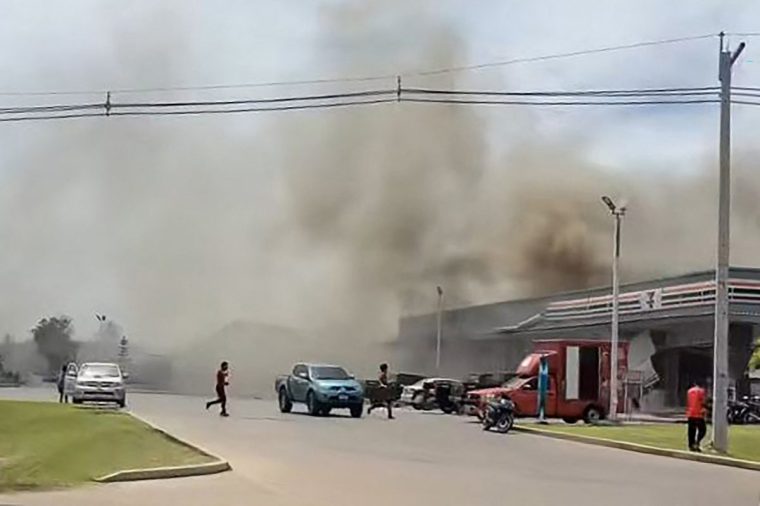British tourists warned to ‘exercise a high level of vigilance in border areas’ and to ‘follow the instructions of local authorities’
Thai and Cambodian soldiers exchanged fire along the two nations’ shared border on Thursday in a major escalation of their conflict that left at least 12 people dead, mostly civilians.
Artillery and rockets were fired from Cambodia, while Thailand also deployed fighter jets. Footage shared online showed Thai villagers fleeing their homes to seek shelter as the clashes began in the morning.
The dispute goes back over 100 years, but has been intensifying again in recent months along the 800km (500 miles) frontier.
The South East Asian neighbours have long-standing border disputes that periodically flare and usually result in brief confrontations and exchanges of gunfire. But tensions have increased further since the killing of a Cambodian soldier during another clash in May.
What caused the latest confrontation?
The trigger for the most recent skirmish was a mine explosion along the border on Wednesday that wounded five Thai soldiers and led Bangkok to withdraw its ambassador to Cambodia and expel Phnom Penh’s representative.
Thailand has also sealed all land border crossings while urging any of its citizens to immediately leave Cambodia. Each side accuses the other of starting the clashes.
Cambodia’s defence ministry accused Thailand of deploying a drone first on Thursday before opening fire, insisting that Phnom Penh “acted strictly within the bounds of self-defence, responding to an unprovoked incursion by Thai troops that violated our territorial integrity”.
Thailand’s foreign ministry, meanwhile, accused Cambodia of attacking both military and non-military sites in Thailand, including a hospital.
“The royal Thai government is prepared to intensify our self-defence measures if Cambodia persists in its armed attack and violations upon Thailand’s sovereignty in accordance with international law and principles,” said Nikorndej Balankura, the ministry’s spokesperson.
Acting Thai prime minister Phumtham Wechayachai said 11 people have died, including 10 civilians and one soldier. Meanwhile 28 have been injured, four of whom were soldiers and the rest civilians.
Cambodia said one of its soldiers had died.
While the countries have since agreed to de-escalate the situation, Cambodian and Thai authorities continued to implement or threaten measures short of armed force, keeping tensions high.
Is it safe to travel to Thailand or Cambodia?
The UK Foreign, Commonwealth and Development Office (FCDO) – which provides safety advice for all British travellers – alerted potential visitors to “reports of fighting including rocket and artillery fire” along the Thai-Cambodian border.
“Casualties have been reported, as well as evacuations of areas close to the border,” an alert posted to both the Thai and Cambodian travel advice pages said.

“Land borders/crossings between Cambodia and Thailand have been suspended. Some tourist destinations in border areas such as the Preah Vihear/Khao Phra Wihan temple, the Ta Krabey/Ta Kwai temple and the Tamone Thom/Ta Muen Thom temple are currently closed.”
It alerted tourists to “exercise a high level of vigilance in border areas” and to “follow the instructions of local authorities”.
Separately the FCDO continues to advise against all but essential travel to border regions between Thailand and Malaysia.
The area is considered dangerous for tourists as it remains a scene of militant activity, primarily involving ethnic Malay Muslim insurgents seeking independence from Thailand.
